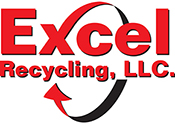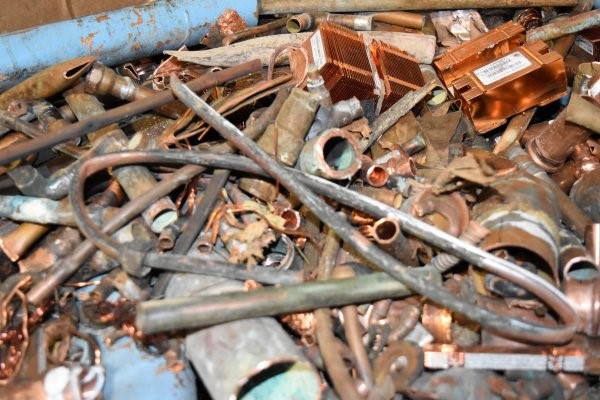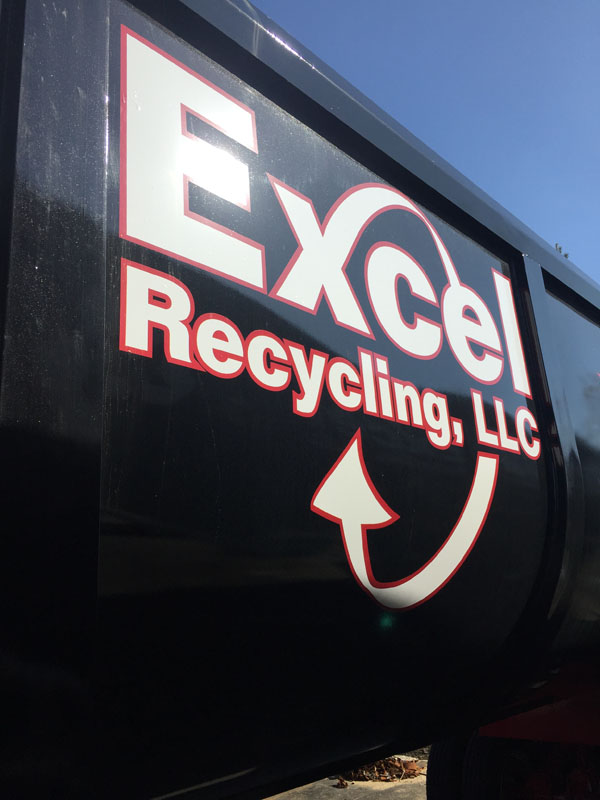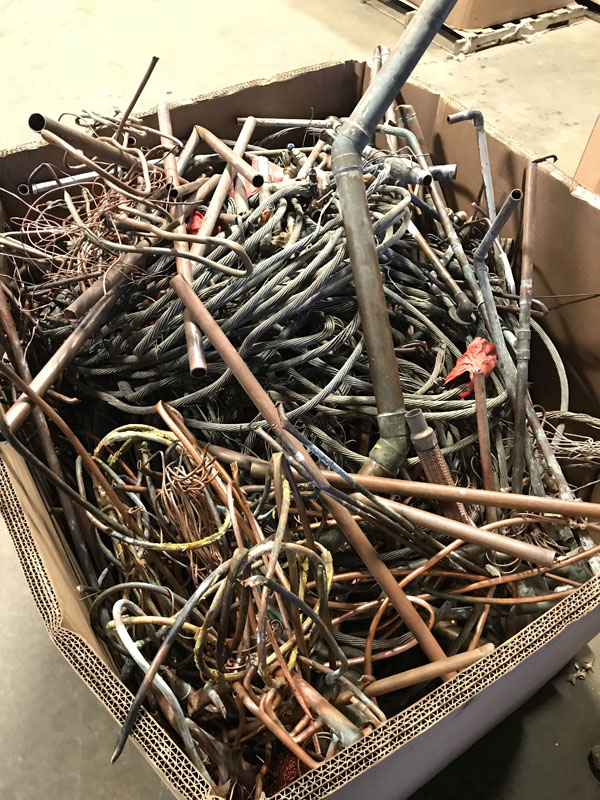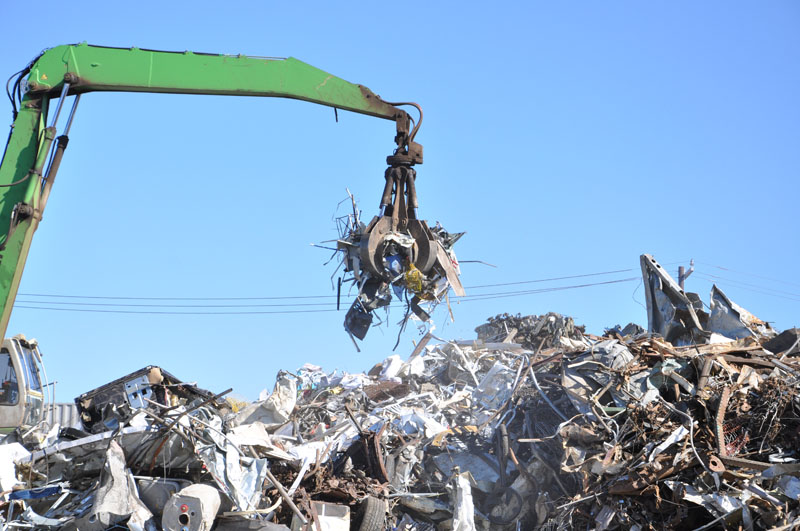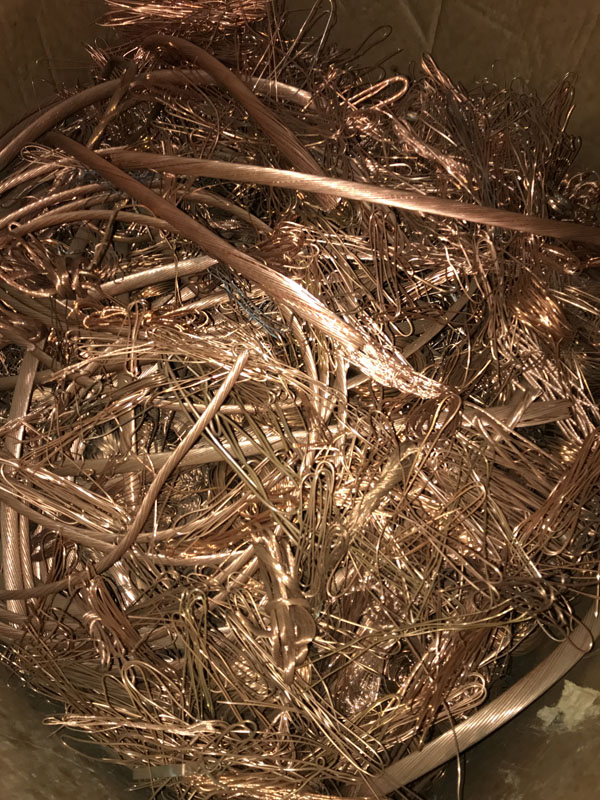The sell prices for all non-ferrous scrap metal has been dropping for several weeks now. All indexes show losses of 10 – 15% including the COMEX and LME. We will see continued softening of the copper, aluminum and stainless steel markets going into June. There remain many global influences that are affecting all scrap metal but the biggest issue is tariffs on finished steel coming out of Turkey and a virtual shutdown of copper products into China.
Uncategorized
Recycling Metal Benefits the Environment
According to research conducted by the US Environmental Protection Agency, recycling scrap metals can be quite beneficial to the environment. Using recycled scrap metal in place of virgin iron ore can yield:[1]
- 75% savings in energy.
- 90% savings in raw materials used.
- 86% reduction in air pollution.
- 40% reduction in water use.
- 76% reduction in water pollution.
- 97% reduction in mining wastes.
Every ton of new steel made from scrap steel saves:
- 1,115 kg of iron ore.
- 625 kg of coal.
- 53 kg of limestone.
Energy savings from other metals include:
- Aluminium savings of 95% energy.
- Copper savings of 85% energy.
- Lead savings of 65% energy.
- Zinc savings of 60% energy.
Other info from Wikipedia – General info
The metal recycling industry encompasses a wide range of metals. The more frequently recycled metals are scrap steel, iron (ISS), lead, aluminium, copper, stainless steel and zinc. There are two main categories of metals: ferrous and non-ferrous. Metals which contain iron in them are known as ferrous.
Metals without iron are non-ferrous.
- Common non-ferrous metals are copper, brass, aluminum, zinc, magnesium, tin, nickel, and lead.
- Usable coins can be deposited in banks. Damaged US coins can be redeemed for money via the Mutilated Coin Redemption Program.
Non-ferrous metals also include precious and exotic metals:
- Precious metals are metals with a high market value in any form, such as gold, silver, and platinum group metals.
- Exotic metals contain rare elements such as cobalt, mercury, titanium, tungsten, arsenic, beryllium, bismuth, cerium, cadmium, niobium, indium, gallium, germanium, lithium, selenium, tantalum, tellurium, vanadium, and zirconium. Some types of metals are radioactive. These may be “naturally occurring” or formed by nuclear reactions. Metals that have been exposed to radioactive sources may also become radioactive in settings such as medical environments, research laboratories, and nuclear power plants.
Let me know when we can get together.
Wayne
Scrap Metal News
April 15th
As the weather has improved the flow of scrap metal both ferrous and non-ferrous grades has increased significantly. This influx of steel scrap specifically has in large part caught up with the demand across the global markets. The demand for the steel scrap slowing has lowered values in both the domestic and foreign steel mills which in turn has lowered prices at the scale for peddlers and commercial customers alike.
The scale prices will reflect this downward movement and projections for the near future are for the market to continue to trend down. All scrap buyers are hopeful that this will be a temporary slide in value and will level out and possibly rebound toward the summer season.
Global influences play a very big role in the ups and downs of scrap metal values and this situation is no different. If the Trump administration and the Chinese government come to an agreement regarding tariffs on goods imported to both countries it would be very positive. This doesn’t need to be a complete solution, even positive steps toward better relations could be all it would take.
Please remember the staff and buyers here at Excel Recycling are available to answer questions and help you achieve the best results when selling your scrap metal.
– Wayne Edwards
Market Update: Copper Markets Fall
Non-ferrous markets as a whole and copper grade values in particular are dropping precipitously across the scrap metal world. Most of the volatility is directly related to trade tariffs and restriction of material into and out of the US recently imposed by the Chinese government in response to Trump administration moves.
Copper has dropped on the COMEX (Commercial Metals Exchange) from $3.30 as of June 6th to $2.66 on July 18th. This creates drops in scale prices of up to $.50 on premium grades. It also reduces greatly the value of insulated copper wire grades, brass and aluminum copper radiators.
The best guidance available from brokers across the world is that there will be continued instability without any expected improvements until early fall. The hope that many people hold is that these trade tariffs are largely maneuvering by the US with the goal of bringing the countries throughout the world to the table to renegotiate trade agreements.
Separate your materials!
Be Sure To Separate Your Materials Before Your Trip To The Scrap Yard
Many scrap yards will not let people do separating at the door because the yard will make less money. You’ll also tie up their labor and could hold up other customers. Having materials separated before going to a scrap yard is important. If you don’t sort your scrap then the scrap yard owner will classify all of your scrap as the least valuable in the load. Think about it – if you have a ton of #1 Bare Bright Wire with a few strips of #2 Copper Tubing/Wire mixed in then you can easily be paid the price for #2 Copper Tubing for the whole load. That price difference can really add up – just think about it!
Being Mislead By Different Scrap Metal Grades
When you’re new to scrapping, you may think you have a load of the good stuff until you get to the yard and find out what you thought was #1 Bare Bright Wire is only Insulated Copper Cable (many variations) because you didn’t strip it. That’s a big difference in price per pound! Even if you’re a veteran around the scrap yard who usually recycles copper wire, say you land a nice load of Insulated Cable only to find out you really got your hands on Data Wire. You’re going to feel the difference when you get paid! Make sure you find out what material you have and how your yard likes it prepared before you get to the yard.
Another material that is important to have an idea about is stainless steel. A common metal that you will come across it’s important to know there are different kinds and grades of stainless steel. Stainless steel has nickel inside, the different grades are determined by the amount of nickel content inside. Ask your scrap yard about how they identify their stainless steel grades.
Market Update
As you may have heard in the news the Trump Administration has announced tariffs of 25% on steel products and 10% on Aluminum products being imported in the US. This is in response to what is thought to be years of under valued material being flooded into the US market. This over production, mainly from China, has dampened steel prices world-wide and put domestic producers at a disadvantage in the market.
The tariffs will likely raise domestic finished steel pricing but may negatively affect scrap exports. If these tariffs signal a trade war on some level it would be likely to see costs of imported finished goods rise. The length of time that these tariff will be in place is not clear but if they prompt renegotiations between the US and it’s largest trading partners then the underlying goal has been achieved.
Please visit our social media pages for more information as the markets change and see current pricing as well as updates on trends.
Recycling News
There are some very successful stories coming out of the recycling industry lately. The one that is in the news today is the nearly perfect rate of recycling for lead acid batteries. These are the batteries that are in your car, lawn mower, motorcycle etc. They can be found in sizes ranging from a few pounds up to steel case batteries in forklifts weighing thousands of pounds.
Battery Council International (BCI), Chicago, and Essential Energy Everyday have released a study showing lead batteries have a recycling rate of 99.3 percent, making them the No. 1 recycled consumer product in the U.S.
There are many factors that contribute to this success. Credit must go to environmental groups both private and public who have made it clear to everyone that lead acid batteries can be dangerous to ourselves and the environment. Secondly, the strong value of the recoverable lead in these batteries make it an attractive scrap products for small scrap sellers and large dealers alike.
Excel Recycling purchases lead acid batteries at all of our locations.
Some Fun Facts about Metals
COPPER
• Copper is the best non-precious metal conductor of electricity.
• The United States annually recycles enough copper to provide the copper content for nearly 25,000 Statues of Liberty.
• Copper and copper alloy scrap provides one-third of the U.S. copper supply. •
ALUMINUM
• The recycling rate for aluminum cans remained at 67 percent in 2013 as more than 60 billion cans were recycled in the U.S.
• In 2013, the energy saved from recycling aluminum beverage cans in the U.S. could fuel more than 1 million cars on the road for a full year.
• In recent years, recycled content has provided 50-60 percent of apparent aluminum consumption.
• Lead-acid batteries, a primary use for lead, have a 98 percent recycling rate.
• A used aluminum can is recycled and back on the grocery shelf in as little as 60 days.
• An estimated 85 to 95 percent of all automotive aluminum is recovered and recycled.
NONFERROUS SCRAP In 2015, the U.S. scrap industry processed (exports plus domestic recycled): • 5 million metric tons of aluminum; • 1.8 million metric tons of copper; • 1.2 million metric tons of lead; • 175,000 metric tons of zinc; and • 622,000 metric tons of nickel/stainless steel. The United States exported nearly $11 billion worth of nonferrous scrap to 85 countries in 2014, including China, Canada, Mexico, South Korea, Japan, Taiwan, Belgium, India, and Germany.
INDUSTRY STATS Energy saved using aluminum scrap vs. virgin materials is up to 92 percent.
Scrap Metal Market Update
There are many factors that influence the prices of both ferrous and non-ferrous scrap metals. You may have seen the stock market making charges up and down in the last few weeks. These fluctuations don’t directly affect the value of scrap metal. The most significant influences that bear on the value of scrap are the volume of scrap in the market, where it is on the global stage, what construction or manufacturers are demanding and weather or time of year.
These influences are interwoven and affect each other in many ways. The weather at any given time of year can create a slow down in transportation. If demand is high this could create a rise in prices during what would seem like normally slow seasons. If heightened demand is coming out of the US domestic market then scrap consolidated in areas of easy rail access may have slightly higher values making for different prices regionally in the US.
The obvious question “how do you predict price fluctuations?” is virtually unanswerable. That doesn’t mean you can’t get a feel for the rhythm of the market and pull some insight from what happens on the global stage. Excel Recycling’s staff is constantly monitoring these influences to bring you an accurate value for your material relative to all these influences.
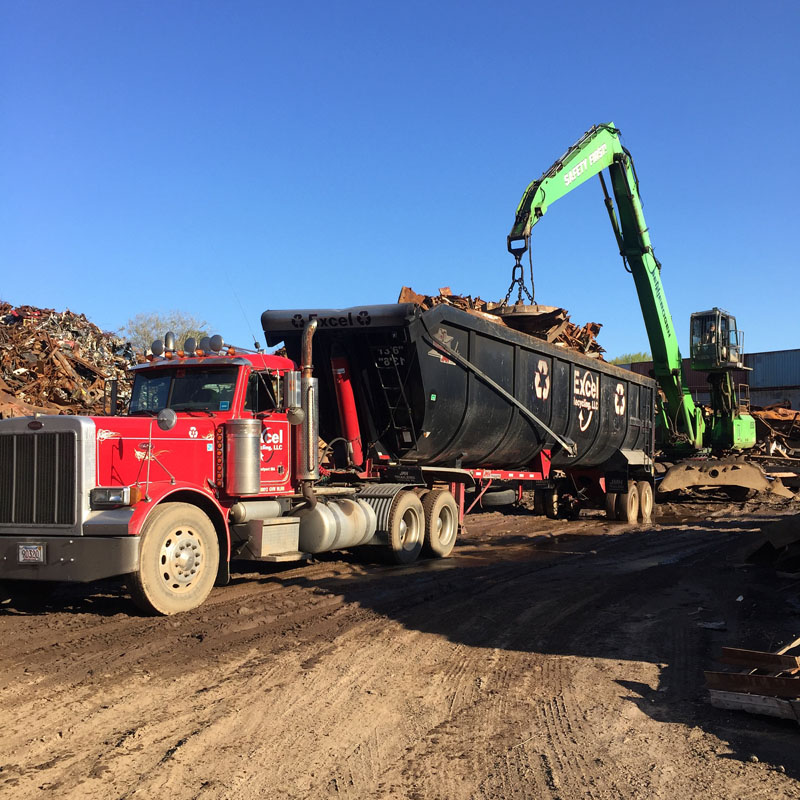
Get the best return on your copper!
Copper scrap metal comes into the yard in many different forms. Here is a quick explanation of the descriptions we use and how to get the best return for your scrap copper.
The best grade is (BB) bare bright copper. This is usually brought to our yards in the form of stripped wire and sometimes cut of and scrap from plumbing projects.The name really says it all. The material should essentially look like a brand new penny of like the big pennys you can get from the buyer Wayne. (If you see Wayne ask for one).
#1 copper is any copper pipe, stripped wire, sheet, chips or turnings that maybe discolored but don’t show any paint, solder, fittings or exceptionally heavy patina.
#2 copper is copper scrap similar to #1 copper but has paint, soldered fittings and heavy patina in the same forms.
Composition or comp is copper pipe that may still have brass fitting or small brass plumbing fixtures attached.
Copper scrap also comes in many other forms an you can always get more information buy calling the office, your buyer or requesting a response through any of our social media FB, Twitter and Instagram for more information.
